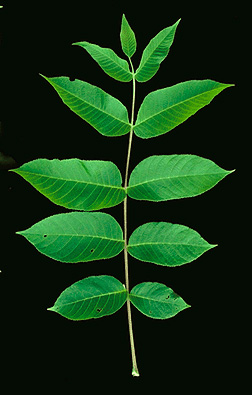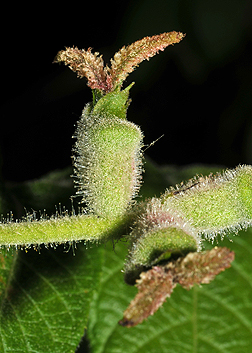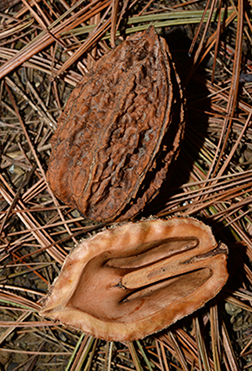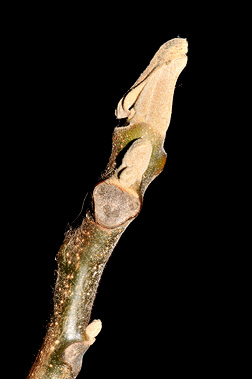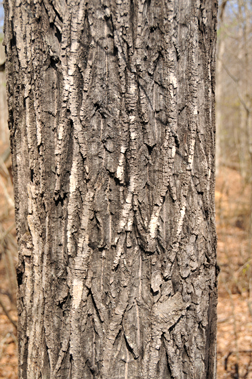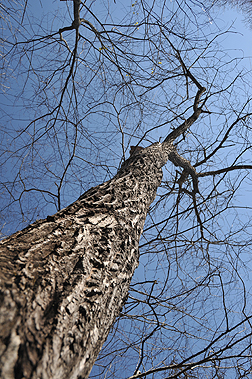 Virginia Tech Dendrology
Virginia Tech Dendrology
butternut Juglandaceae Juglans
cinerea L.
![]()
![]() symbol: JUCI
symbol: JUCI
Leaf: Alternate, pinnately compound, 15 to 25 inches long, with 11 to 17 oblong-lanceolate leaflets with serrate margins; rachis is stout and pubescent with a well developed terminal leaflet; green above and paler below.
Flower: Species is monoecious; male flowers are single-stemmed, yellow-green catkins, 2 1/2 to 5 1/2 inches long; females are on a short spike near the end of the twig, green-yellow in color, appear in mid to late summer.
Fruit: Oblong (lemon shaped), with a yellow-green sticky indehiscent husk; husk contains an irregularly-ribbed nut containing sweet, oily meat; mature in late summer.
Twig: Stout, may be somewhat pubescent, yellow-brown to gray, with a chambered pith that is very dark brown in color; buds are large and covered with a few light colored pubescent scales; leaf scars are 3-lobed, resembling a "monkey face"; a tuft of pubescence is present above the leaf scar resembling an "eyebrow".
Bark: Light, ashy gray, with flat top, shiny ridges, developing diamond shaped patterns.
Form: A small to medium sized tree up to 60 feet with a forked or crooked trunk and wide-spreading branches.
Looks like: black walnut
- bitternut hickory
- tree-of-Heaven
- English walnut
Additional Range Information: Juglans cinerea is native to North America. Range may be expanded by planting. Download the full-size PDF map.
More Information: Fall Color - Wood
External Links: USDAFS Silvics of North America - USDAFS FEIS Silvics - USDA Plants Database - USDAFS Forest Products Lab
All material 2025 Virginia Tech Dept. of Forest Resources and Environmental Conservation; Photos and text by: John Seiler, Edward Jensen, Alex Niemiera, and John Peterson; Silvics reprinted from Ag Handbook 654; range map source information
